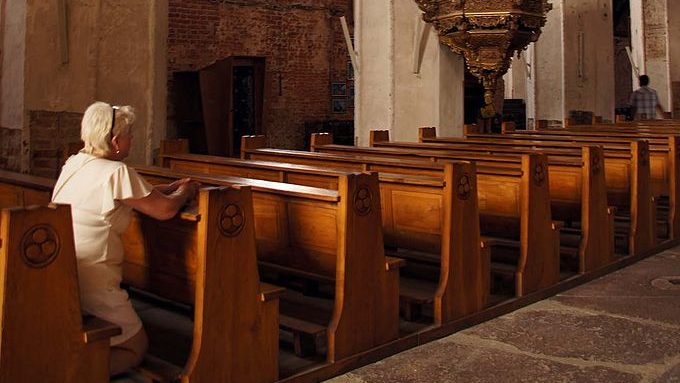There are four distinct kinds of Christian prayer: There is Incarnational prayer, Mystical prayer, Affective prayer, and Priestly prayer. What are these? How are they different from one another?
Incarnational Prayer. St. Paul invites us to “pray always.” How is this possible? We can’t always be praying — or can we? What Paul is inviting us to do is what Jesus asks of us when he tells us to “read the signs of the times.” In asking this, Jesus is not suggesting we read every political, social, or economic analysis we can find.
Rather, he is inviting us to look for the finger of God in every event in our lives. My parents’ generation called this being attuned to “Divine Providence,” that is, looking at every event in our lives and the major events of our world, and asking ourselves: “What is God saying in this event?”
One must be careful in doing this. God doesn’t cause accidents, sickness, heartbreak, wars, famine, earthquakes, global warming, or pandemics; neither does God cause lottery wins or our favorite sports team to win a championship, but God speaks through them. We pray incarnationally when we pick up that voice.
Mystical Prayer. Praying mystically is not a question of having extraordinary spiritual experiences — visions, raptures, ecstasies. Mysticism is not about these things. Mystical experience is simply being touched by God in a way that is deeper than what we can grasp and understand in our intellect and imagination, a knowing beyond head and heart.
Mystical knowing works this way: Your head tells you what you think is wise to do; your heart tells you what you want to do; and your mystical center tells you what you have to do. For example, C.S. Lewis, in describing his conversion experience, tells us that the first time he knelt down and acknowledged Christ, he didn’t do it with enthusiasm. Rather, in his famous words, he knelt down “as the most reluctant convert in the history of Christendom.”
What compelled him to do that? His words, “God’s harshness is kinder than human gentleness, and God’s compulsion is our liberation.” We pray mystically whenever we hear and listen to the most compelling voice of all inside us, the one that tells us where God and duty call us.
Affective Prayer. All devotional prayers (adoration of Christ, litanies, rosaries, prayers asking for the intercession of Mary or a saint, and the like) are ultimately affective prayer, as are all forms of meditation and contemplation. They all have the same intentionality. What is that?
In the Gospel of John, the first words out of Jesus’ mouth are a question. People are looking at him in curiosity, and he asks them, “What are you looking for?” That question remains throughout the rest of the Gospel as an undergirding. A lot of things are happening on the surface, but underneath, there remains always the one nagging, restless question: “What are you looking for?”
Jesus answers that question explicitly at the end of the Gospel, on the morning of the resurrection. Mary of Magdala comes looking for him, carrying spices with which to embalm his dead body. Jesus meets her, but she does not recognize him. He then repeats the question with which he had opened the Gospel: “What are you looking for?” and gives us its real answer.
He pronounces her name in love: “Mary.” In doing this, he reveals what she and everyone of us are forever looking for, namely, God's voice, one-to-one, speaking unconditional love, lovingly saying our name. At the end of the day, that’s what we all are looking for, to hear God pronounce our name in love. All devotional prayer, whether it be for ourselves, for others, or for the world, has this as its ultimate aim.
Priestly Prayer. Priestly prayer is the prayer of Christ through the Church for the world. The Christian belief is that Christ is still gathering us together around his word and the Eucharist. And, we believe that whenever we come together, in a church or elsewhere, to gather around the Scriptures or to celebrate the Eucharist, we are entering into that prayer. This is generally called liturgical prayer; this kind of prayer is Christ's prayer, not our own. Moreover, it’s not a prayer first of all for ourselves or even for the Church, but one for the world — “My flesh is food for the life of the world.”
We pray liturgically, priestly prayer, whenever we gather to celebrate the Scriptures, the Eucharist, or any sacrament. As well we pray in this way when, in community or privately, we pray what is called the Liturgy of the Hours or the Divine Office (Lauds and Vespers). We are asked to pray regularly for the world in this way by virtue of the priesthood conferred on us in our baptism.
A mature, spiritually healthy Christian prays in these four ways, and it can be helpful to distinguish clearly among these kinds of prayers so as to be praying always and praying with Christ.

